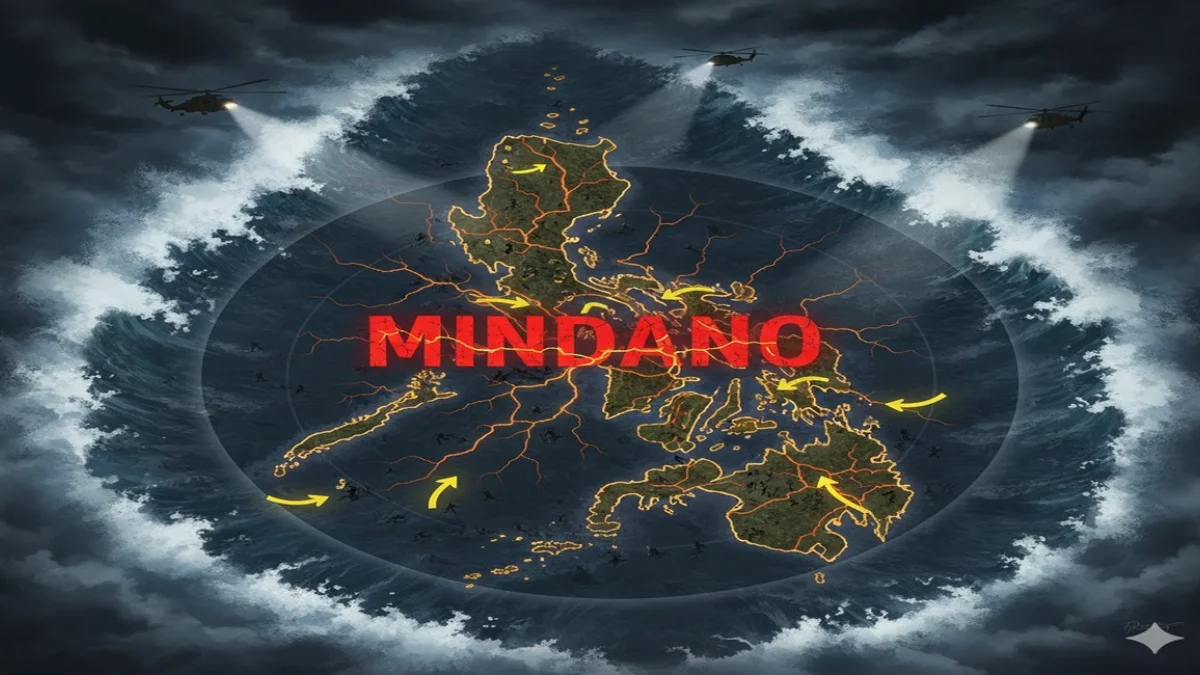Philippines Earthquake 2025: Massive 7.4-7.6 Quake Rocks Mindanao, Tsunami Alert Raised
Early morning in Mindanao, a powerful Philippines earthquake 2025 shook the southern archipelago, unleashing raw force and urgent warnings. Initially reported as 7.6 magnitude, the tremor was later revised to 7.4 to 7.5, but even that did little to temper alarm. The quake hit off the coast near Manay in Davao Oriental, at a depth of roughly 10–20 km — a shallow strike, by tectonic standards.
The tsunami alert Philippines issued in wake of the quake sent coastal communities scrambling. In a matter of hours, the Pacific Tsunami Warning Center warned of possible waves reaching 1 to 3 meters above normal tides across coasts within 300 km of the epicenter. Authorities ordered evacuations.
At least two deaths have been confirmed, with homes, schools, and hospitals reporting damage. Power outages, cracked walls, ground fissures and panic added to the chaos. As aftershocks were felt across the region, officials raced to mount search, rescue, and damage assessment.
This quake comes just days after a magnitude 6.9 tremor in Cebu claimed dozens of lives. Together, they underscore the Philippines’ hazardous position along the Ring of Fire and the growing urgency of seismic preparedness.
Indian Air Force Day 2025 – History, Significance & Events
The Core Facts: What Happened & Where
- The quake struck around 9:43 a.m. local time, centered some 60 km east of Manay town.
- Local agencies initially recorded the quake at 7.6, but consensus from USGS and EMSC settled on 7.4 to 7.5 with depths of 10 to 20 km.
- Coastal provinces including Eastern Samar, Leyte, Surigao, Davao Oriental were under tsunami warning. That warning was later lifted after no destructive waves were reported.
- The quake damaged infrastructure: hospital walls cracked, schools evacuated, power lines disrupted.
- In Davao Oriental, at least two lives were lost, including people pinned in collapsed structures.
- A strong 6.9 aftershock in the same fault zone later raised fresh alerts and fears.
The Tectonic Context & Why Damage Was High
Mindanao lies near the Philippine Trench, a major subduction boundary where the Philippine Sea Plate dives under the archipelago. The region is seismically alive. In this instance:
- The shallow depth magnified shaking.
- Local fault lines, many unmapped, likely contributed to unusually strong ground motion.
- The recent preceding quake in Cebu (6.9) suggests stress redistribution may have contributed.
- The repeated jolts strain both buildings and public confidence in infrastructure resilience.
Celebrate Sharad Purnima: Significance, Legends, and Rituals
Human Toll & Emergency Response
Communities woke in panic. Roads cracked. Electricity flickered out. In Manay and neighboring towns:
- Schools suspended classes; students evacuated mid-session.
- Hospitals with structural damage evacuated patients to temporary tents.
- Local government units and the military began search and rescue efforts amid aftershocks.
- Evacuation orders were enforced in low-lying coastal areas.
President Ferdinand Marcos Jr. pledged swift aid and coordination. “We are working round the clock to ensure help reaches everyone who needs it,” he said.
What Comes Next: Risk, Lessons & Recovery
- Aftershocks will continue — some may reach magnitude 5–6. Residents must remain alert.
- Damage assessments will take days; remote communities may remain cut off.
- Infrastructure repair (roads, power, communication) will be prioritized to restore connectivity.
- Government will likely review building codes, quake readiness, and evacuation protocols.
- Scientific scrutiny will focus on fault mapping and early warning upgrades.
For analysis of how nations adapt before and after major quakes, see studies in seismology and resilience (for example, Nuvexic’s coverage of stress mapping).
Conclusion
This Philippines earthquake 2025 was more than a natural tremor—it was a reminder of the archipelago’s fragile ground. A quake of this strength, hitting shallow undersea near densely populated zones, tests the limits of disaster readiness. Lives have been lost, buildings shaken, and nerves rattled. The tsunami alert was lifted, but the aftershocks remain. As recovery begins, the big question looms: will this moment prompt stronger resilience for the next inevitable quake? Stay with us for updates, maps, and eyewitness reports.
Frequently Asked Questions
Q: Why was the quake initially reported as magnitude 7.6?
A: Local agencies, including PHIVOLCS, first estimated 7.6 before global bodies (USGS, EMSC) re-evaluated it at 7.4–7.5 based on deeper data sets.
Q: Was a tsunami actually generated?
A: A tsunami warning was issued and evacuations ordered, but no destructive waves were confirmed; the alert was later lifted.
Q: How many people have died and been injured?
A: At least two deaths are confirmed; number of injuries is still being assessed amid damage reports.
Q: Could this earthquake trigger more quakes?
A: Yes. Aftershocks are expected. The stress shift may activate nearby faults, some possibly reaching magnitude 5 or above.
Q: Which areas are most at risk now?
A: Coastal provinces near Davao Oriental, Surigao, Eastern Samar, and Leyte remain vulnerable. Authorities advise staying inland until all clear is given.

